
10-10-2021, 10:16 PM
|
 |
Member
|
|
Join Date: May 2009
Posts: 1,131
|
|
 All Alaska Stuff
All Alaska Stuff
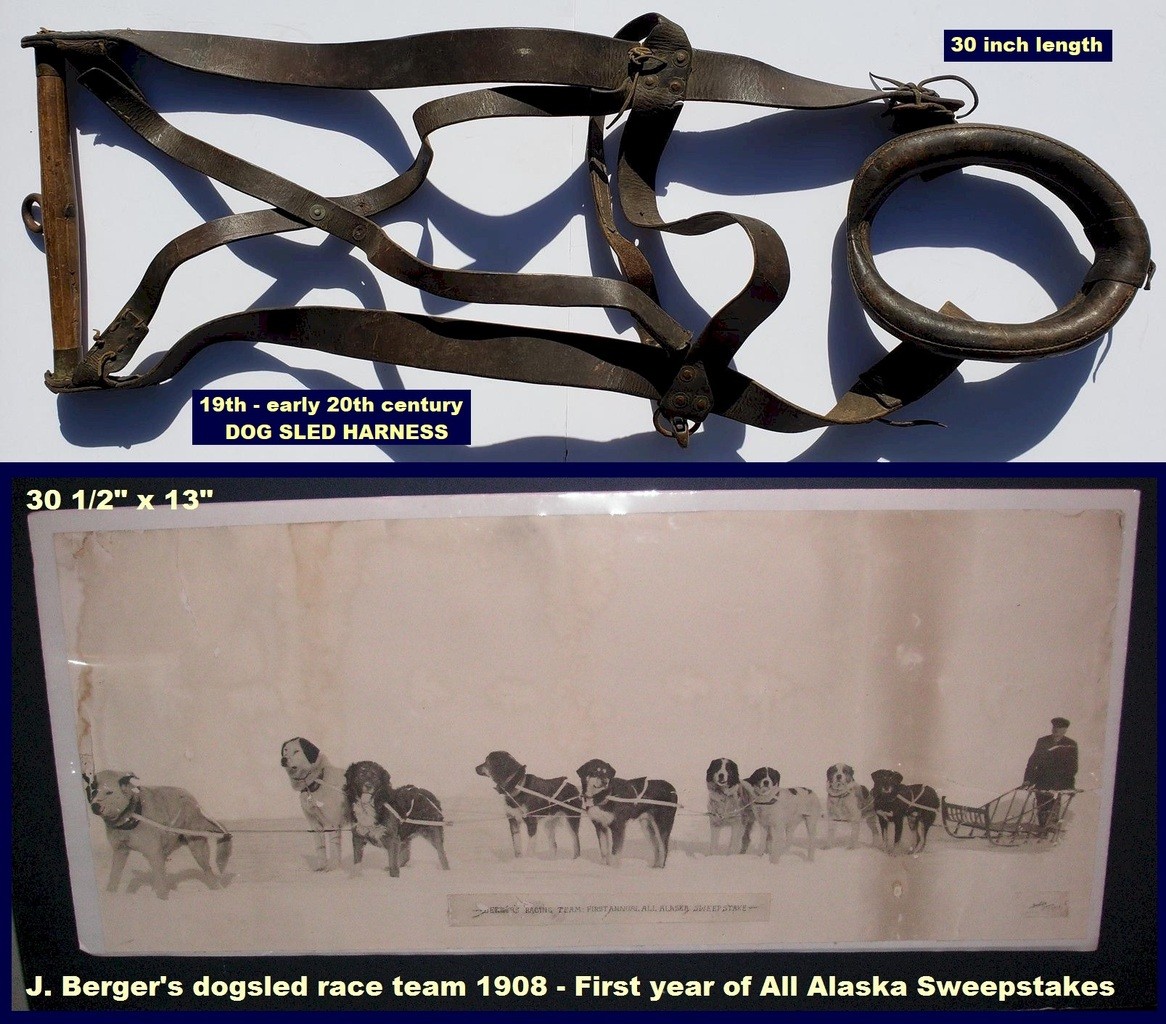 One of the things I collect is early All Alaska Sweepstakes Dog Sled Race items. The first race was 1908 and ran consecutively until 1917…then was restarted in 1983 and again in 2008...The All Alaska race was the first major sled race….before the Iditarod…It’s a very demanding sport. Although there were check points that followed the telegraph lines…between them the terrain was extreme…The teams are on their own in desolation out in the middle of nowhere basically…against the elements and wolves…Maybe today they have Sat phones but not back then…
One of the things I collect is early All Alaska Sweepstakes Dog Sled Race items. The first race was 1908 and ran consecutively until 1917…then was restarted in 1983 and again in 2008...The All Alaska race was the first major sled race….before the Iditarod…It’s a very demanding sport. Although there were check points that followed the telegraph lines…between them the terrain was extreme…The teams are on their own in desolation out in the middle of nowhere basically…against the elements and wolves…Maybe today they have Sat phones but not back then…
One day maybe ten years ago I went to the San Francisco Paper Fair and found a panoramic of a dogsled team from the first All Alaska race…Over the years I’ve gathered a few more things…a program from the 1909 race and marshal’s ribbon…Then recently I spotted a dog sled harness on eBay…There was one for like $700.00…and this one was listed for $256.00 OBO…I figured it would go well with my All Alaska stuff so made a run at it…got it for $180.00…Really I was sort of apprehensive as I had never even seen a dog sled harness…so I was very curious what I was getting into…I did my due diligence and researched it best I could before pulling the trigger…found a guy on-line in Alaska who mushes and asked his opinion…basically he gave the nod…said he had one that had been in a museum…and his attorney had a collection of ten…Plus I learned of other people like me that collect early Alaska…
https://en.wikipedia.org/wiki/Leonhard_Seppala
One of the racers Leonhard Seppala, who won the sweepstakes in 1915, 16 and 17 is especially interesting…see below excerpt from Wikipedia
Role in the "Serum Run" of 1925
A diphtheria outbreak struck Seppala's town of Nome, Alaska in the winter of 1925. Previously unexposed children as well as adults were at risk of dying from the infection. Seppala's only child—an eight-year-old daughter named Sigrid—was also at risk. The only treatment available in 1925 was diphtheria antitoxin serum. However, the town's supply was not only insufficient but also of presumably low efficacy, being past its expiry date. The only practical way to deliver more serum to Nome in the middle of the coldest winter in 20 years was by dog sled. A relay of respected mushers was organized to expedite the delivery, and Seppala (with lead dog Togo) was chosen for the most forbidding part of the trail.[1] The serum was to be taken by train to Nenana, and from there relay teams would set out from Nome and Nenana, meeting in the middle at Nulato. The whole trail was 674 miles from Nenana to Nome, and Seppala was initially selected to cover the more than 400 miles from Nome to Nulato and back. Seppala's section of trail featured a dangerous shortcut across Norton Sound, which could save a full day of travel. It was decided that he was the most qualified of the relay mushers to attempt this shortcut. The ice on Norton Sound was in constant motion due to currents from the sea and the incessant wind. It ranged from rough hills of smashed-together ice to slippery "glare ice" polished by the wind, where it was difficult for the dogs to get a foothold. Small cracks in the ice could suddenly widen, and driver and team could be plunged into the freezing water. If the wind blew from the east, it could reach speeds as high as 70 mph (110 km/h), flipping over sleds, pushing dogs off course, and causing a windchill as low as −100 °F (−73 °C). A sustained east wind could also push the ice out to sea, and a team caught on a drifting floe could find itself stranded on open water. Seppala had taken the shortcut across the Sound several times in his career; a less-experienced musher was likelier to lose not only his life and the lives of his dogs, but also the urgently needed serum. Seppala would cross the sound each way in the race to deliver the serum...
So came the day it arrived…When I pulled it out of the box and spread it out it looked incredible…ancient …way more impressive in person than in the photo…the leather is a bit stiff and cracked but not too bad…and the rivets and attachments look like 1890…but there’s no way to tell…no makers marks…no doubt a professional harness maker made it back in the day…The seller was in Washington state and said he got it at an estate sale…so no telling its origin….it’s possible it could have found its way to Washington from Alaska…Sort of what made me get it was….even though it’s a bit stiff from age and all there’s no missing pieces…it’s all there…
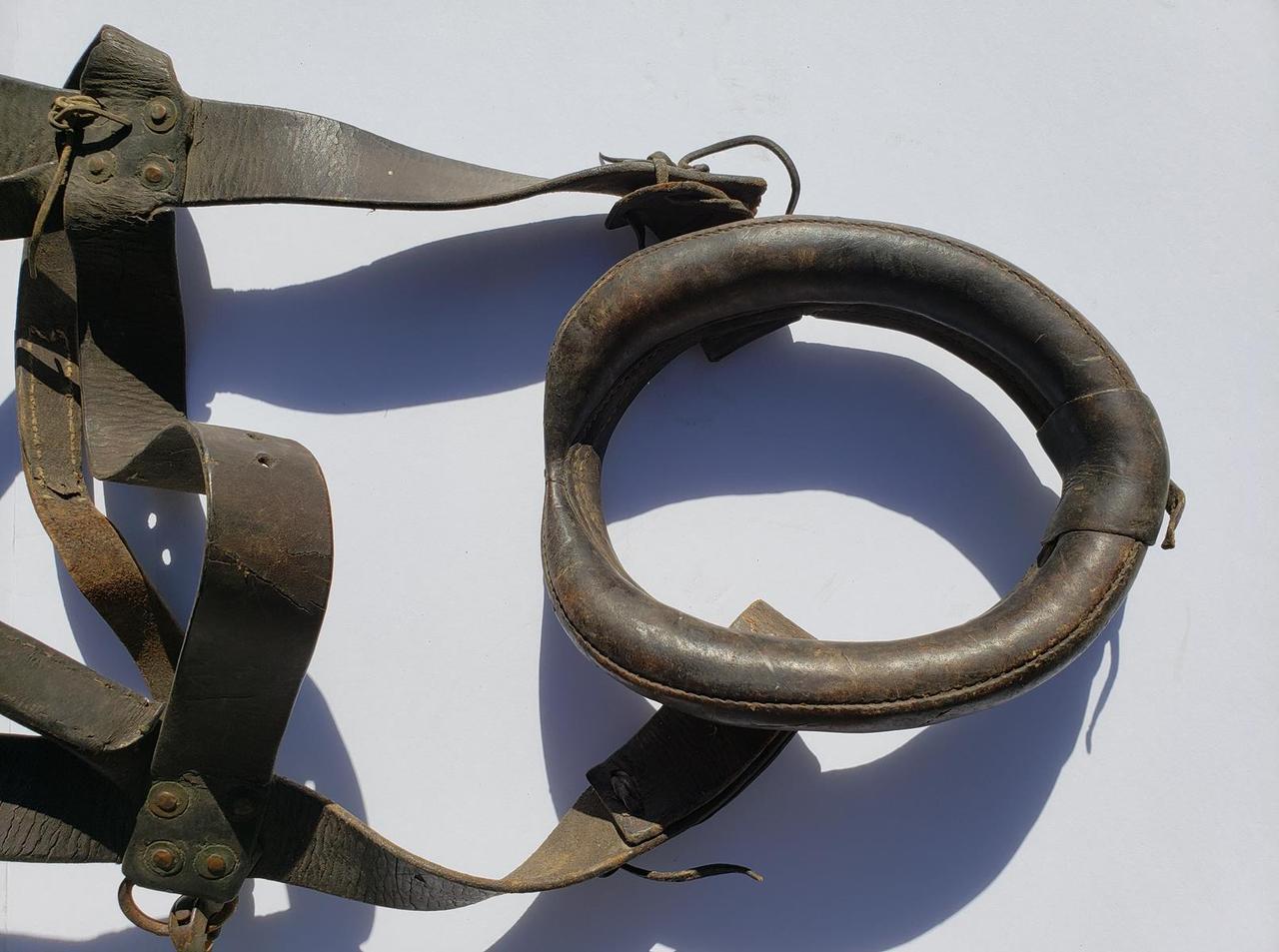
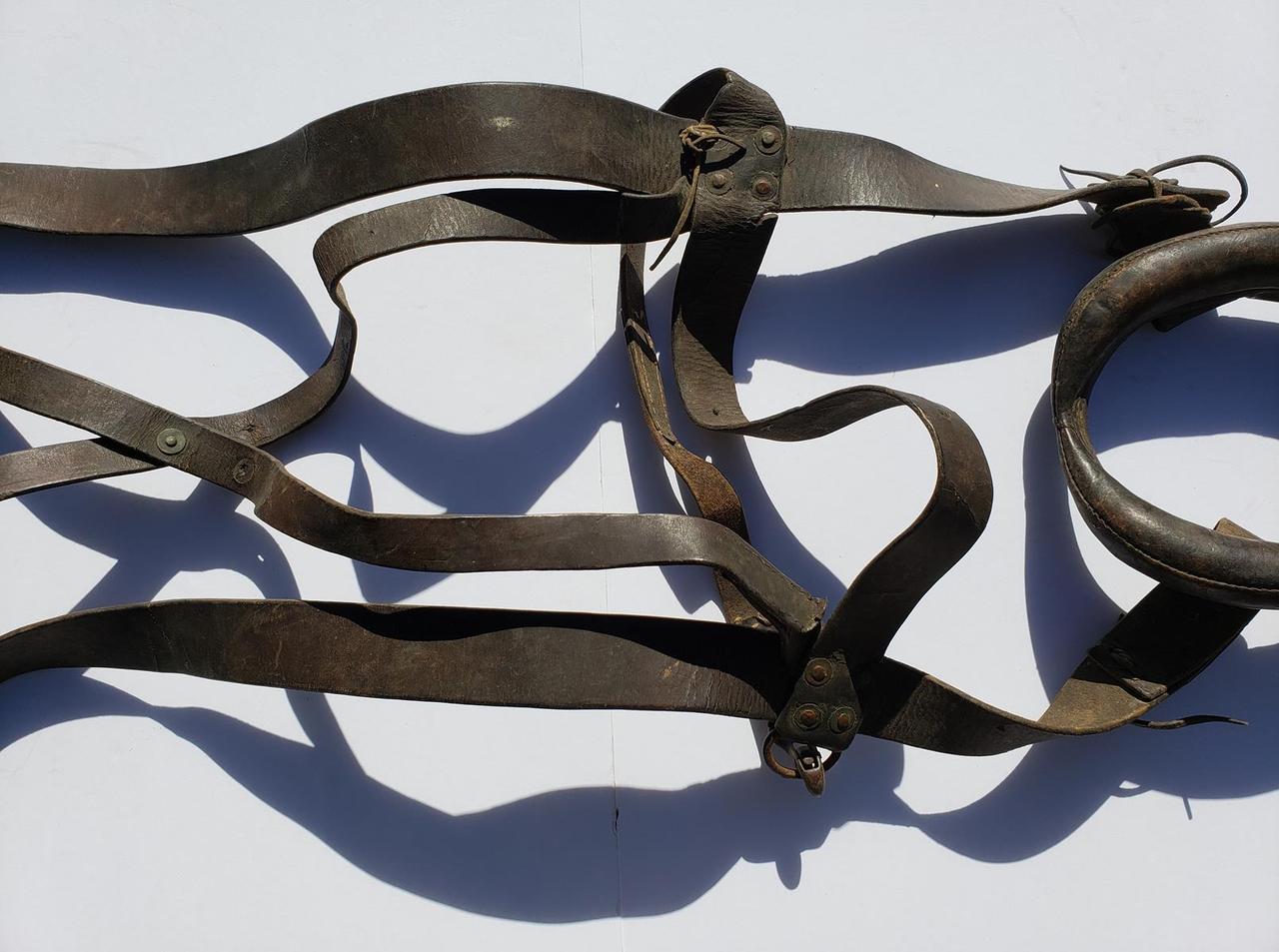
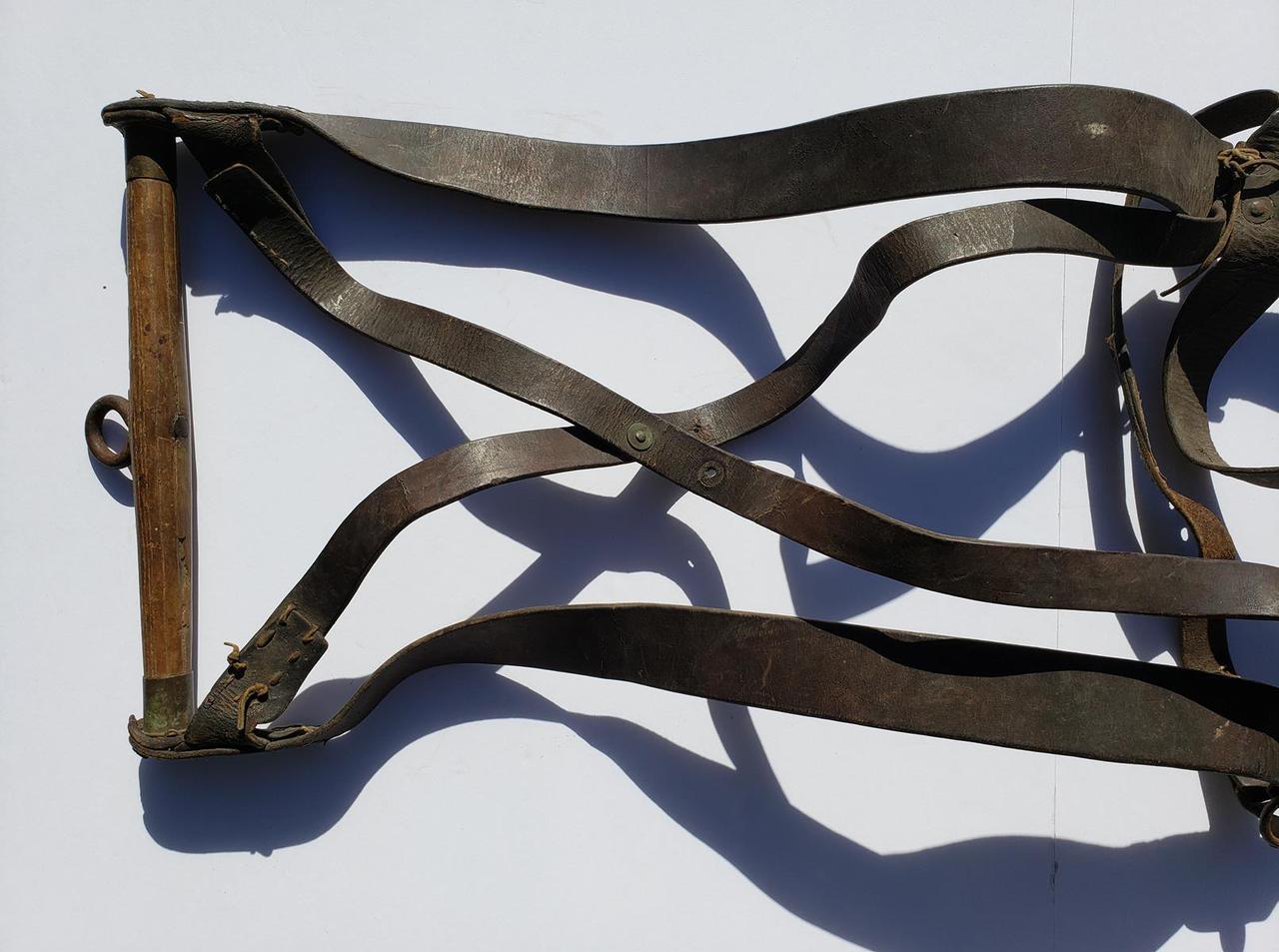
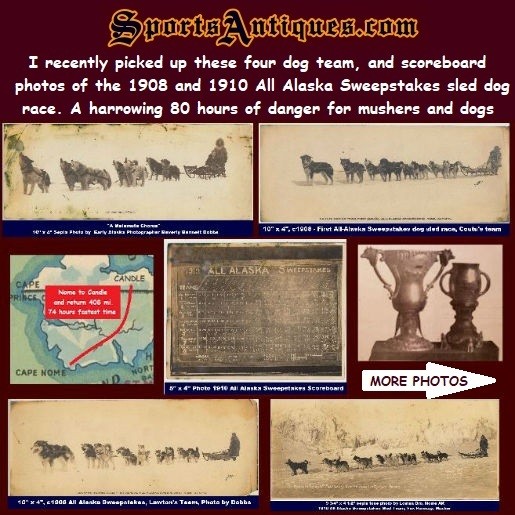


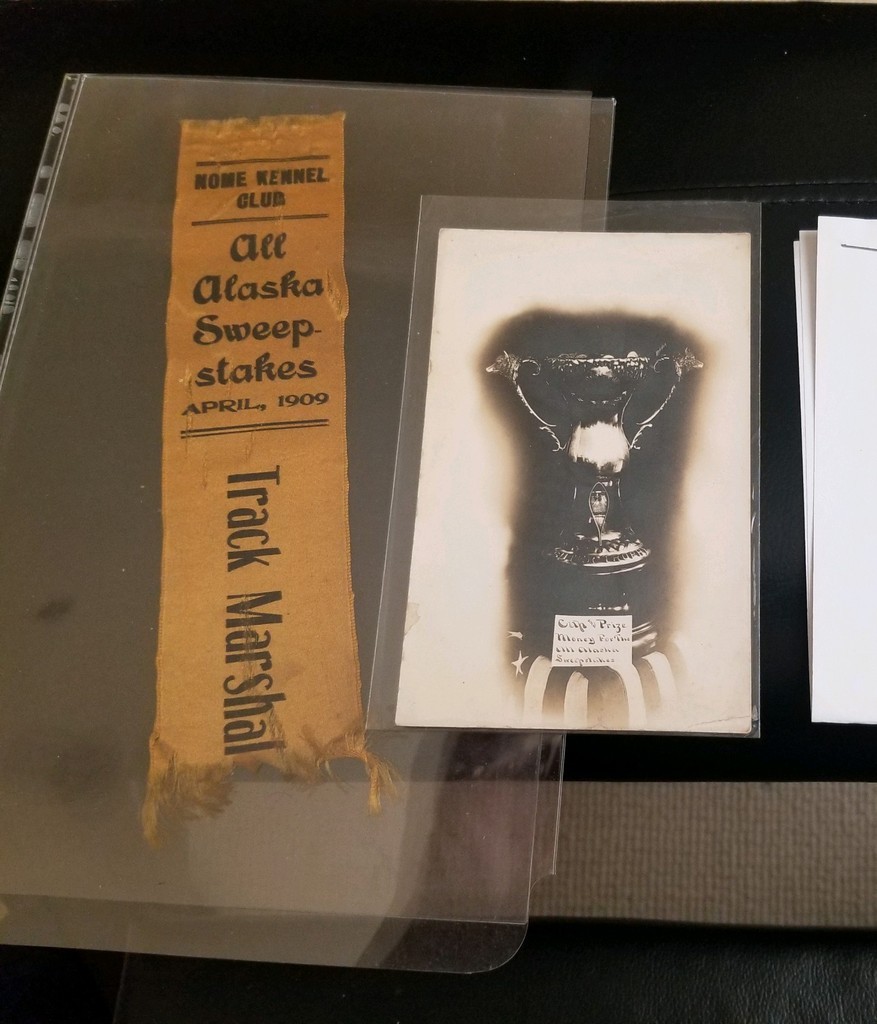
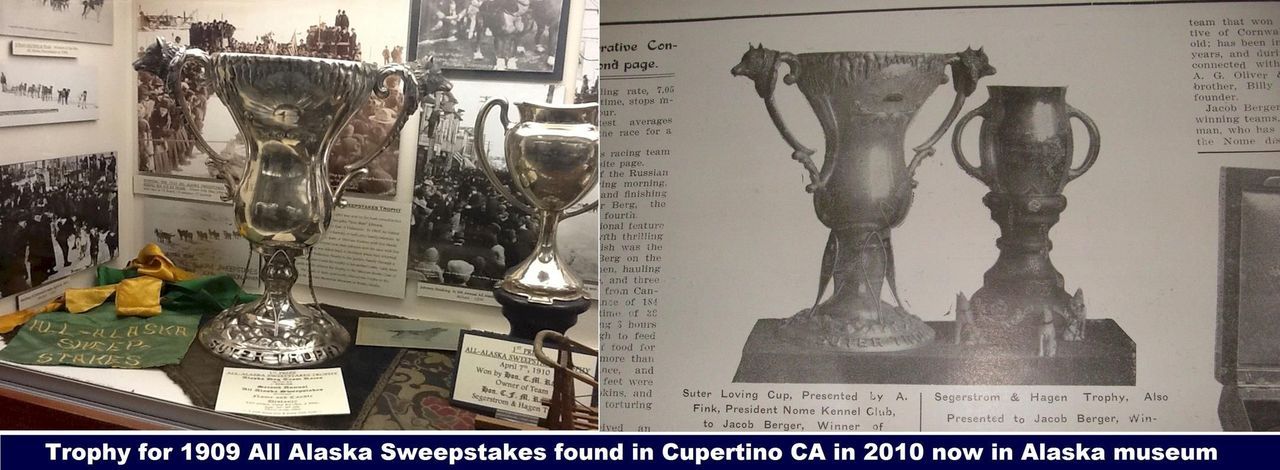
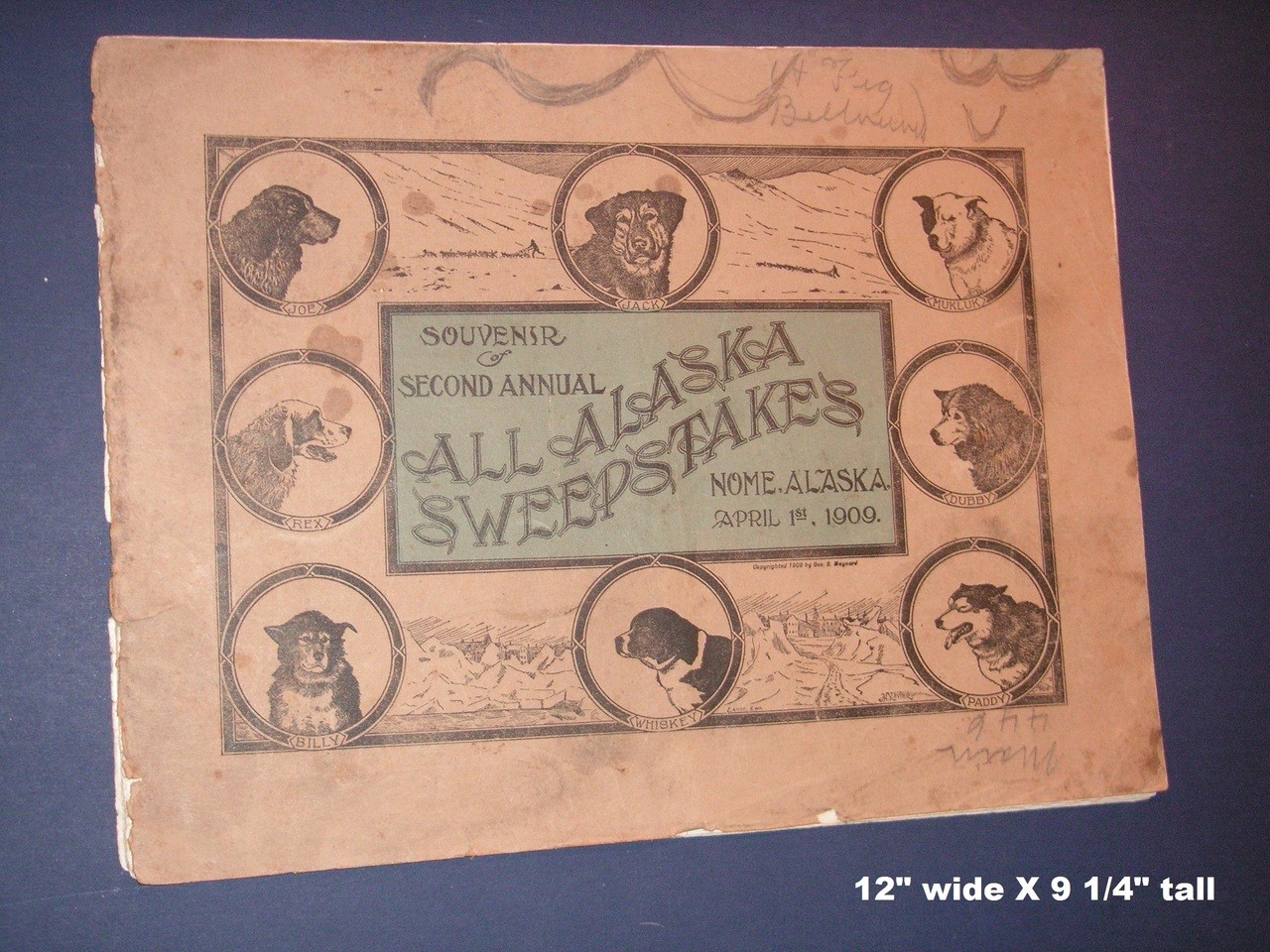
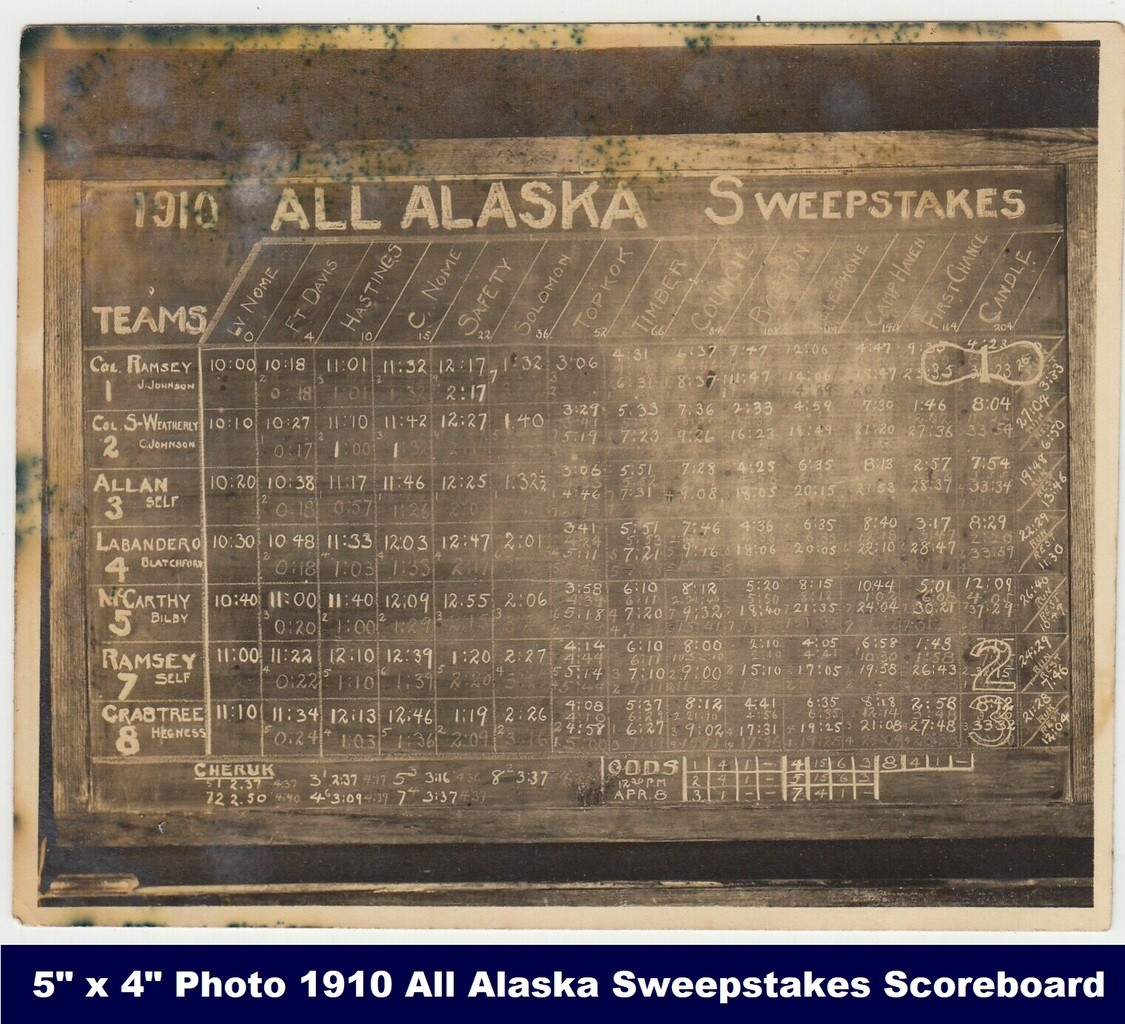
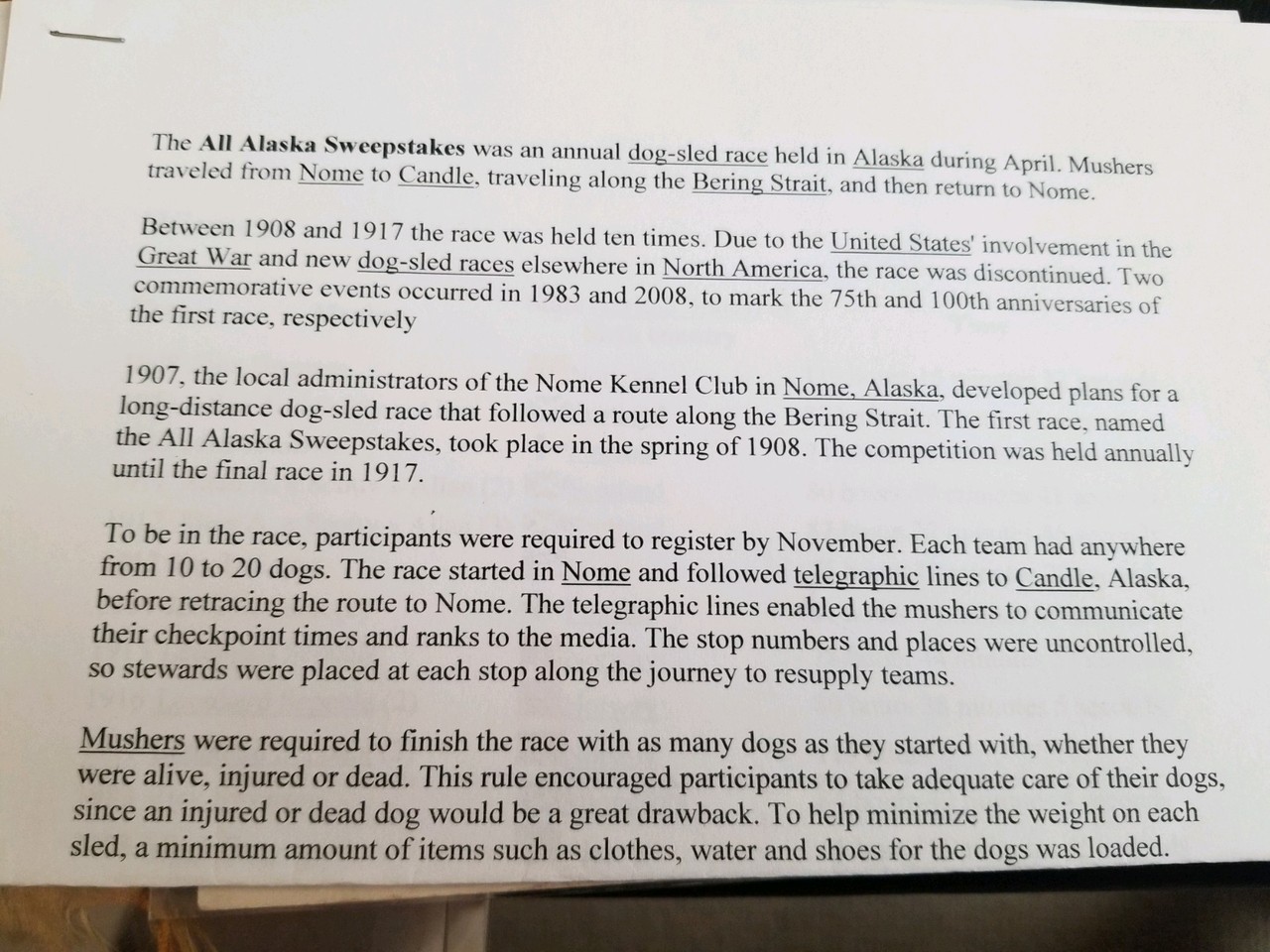
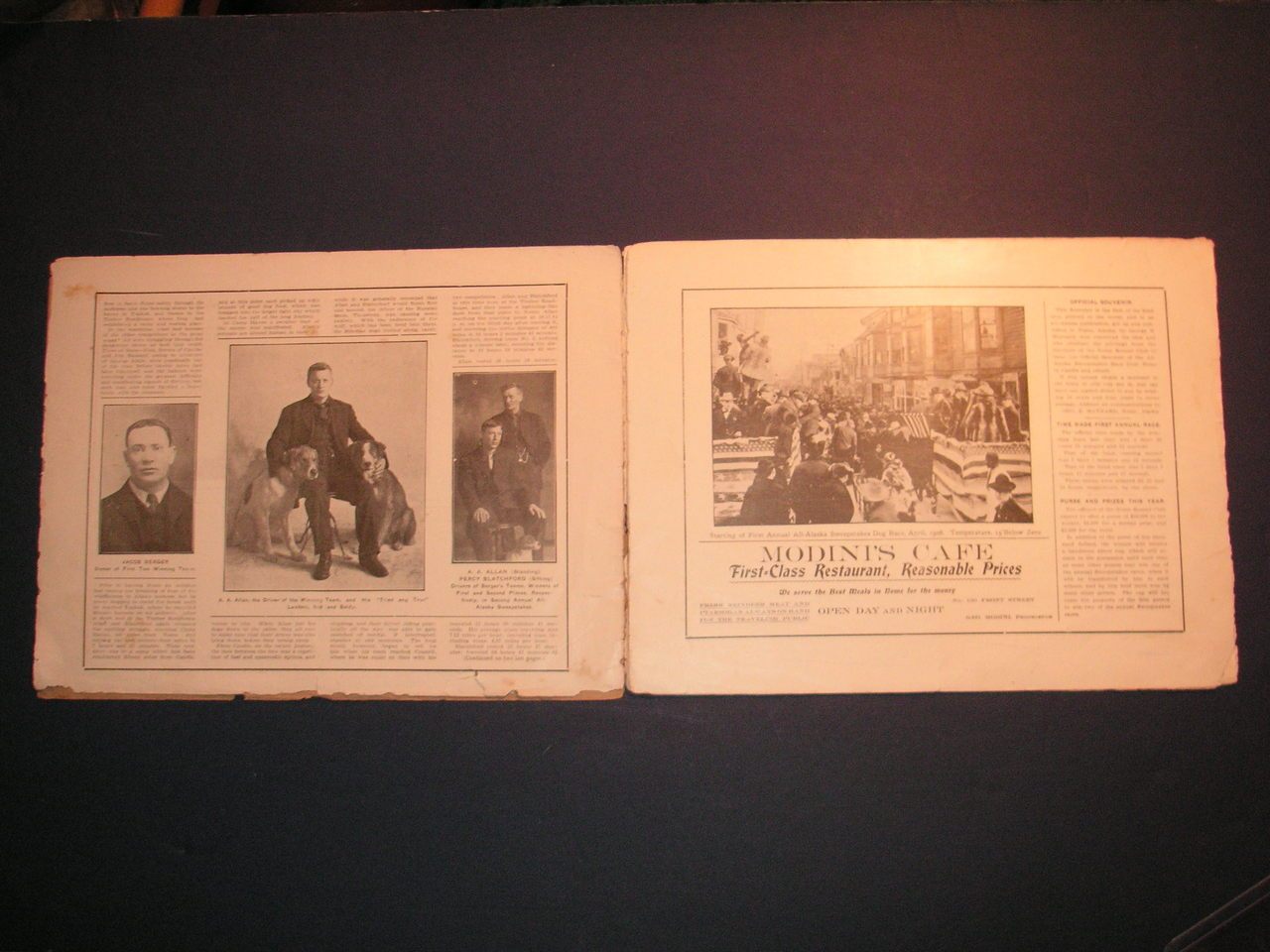
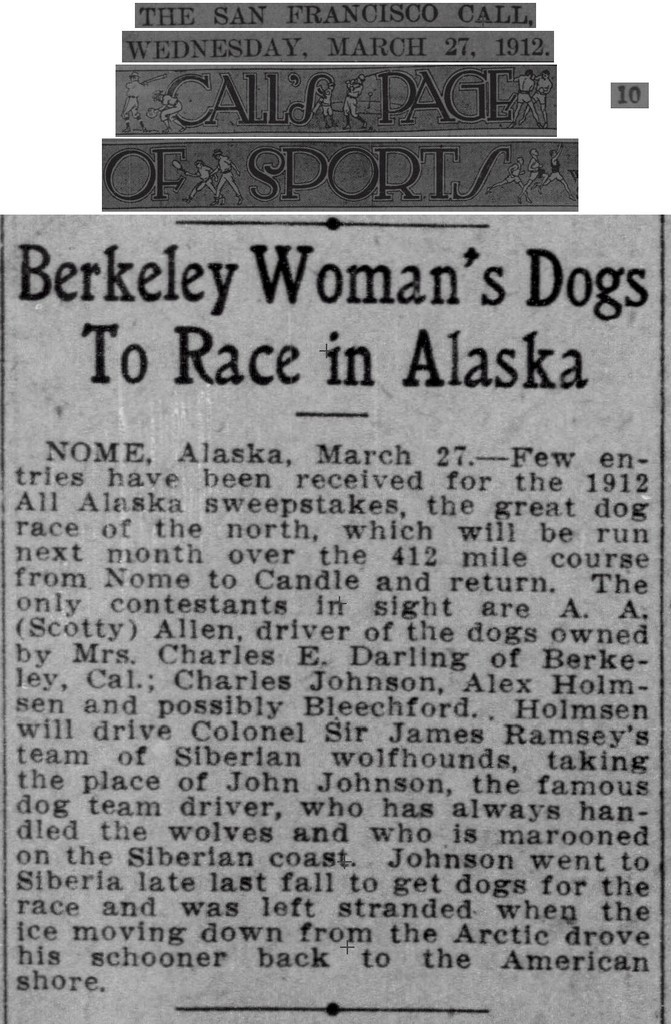
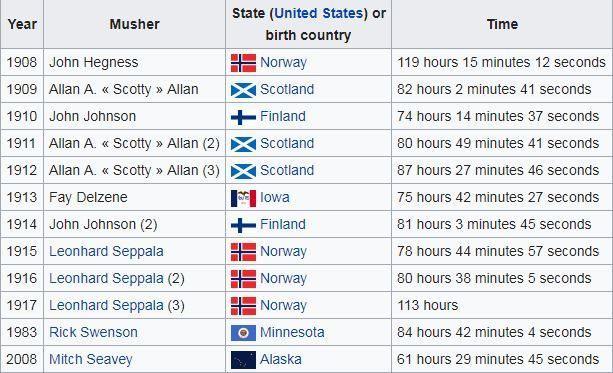
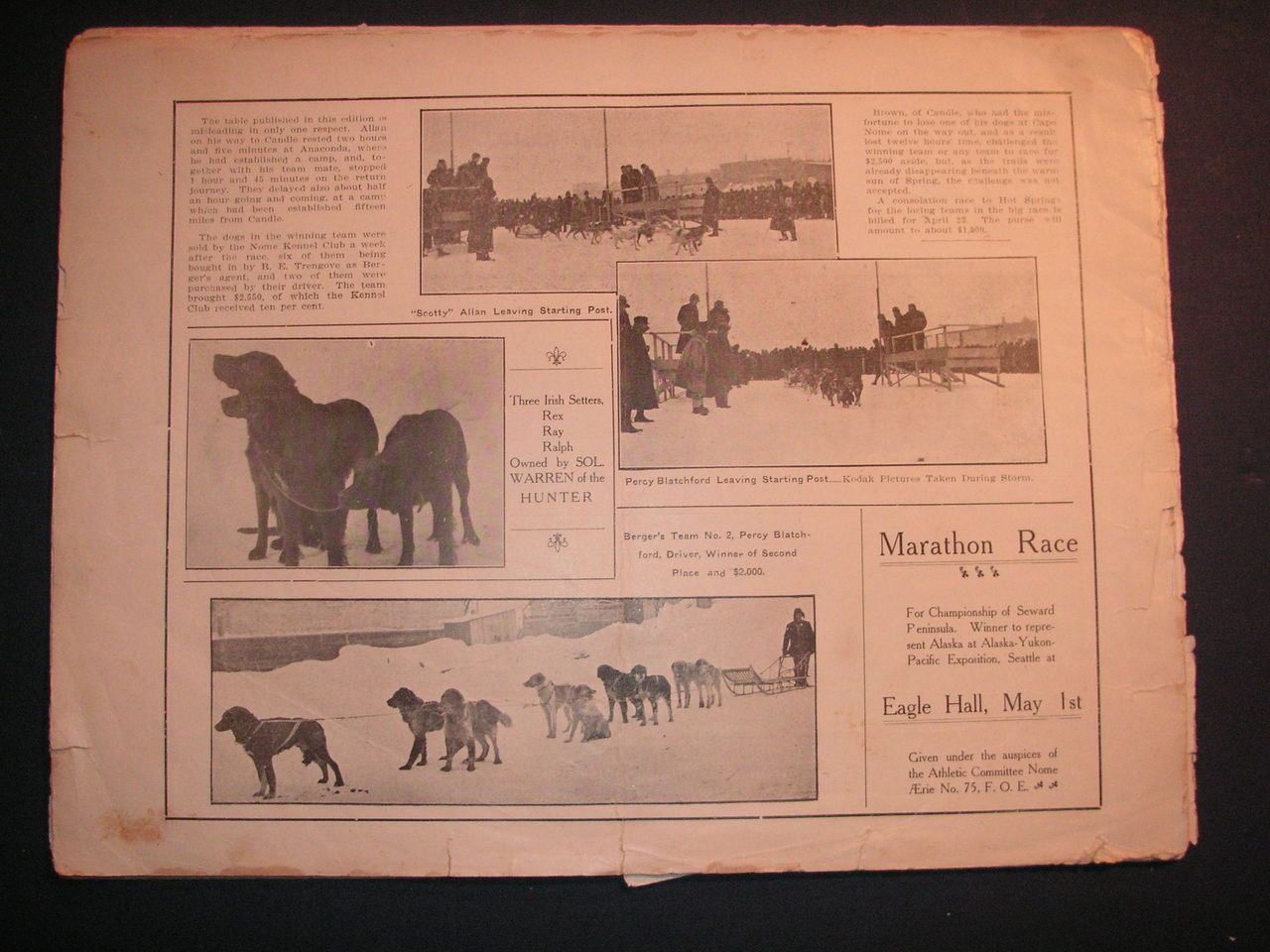
|